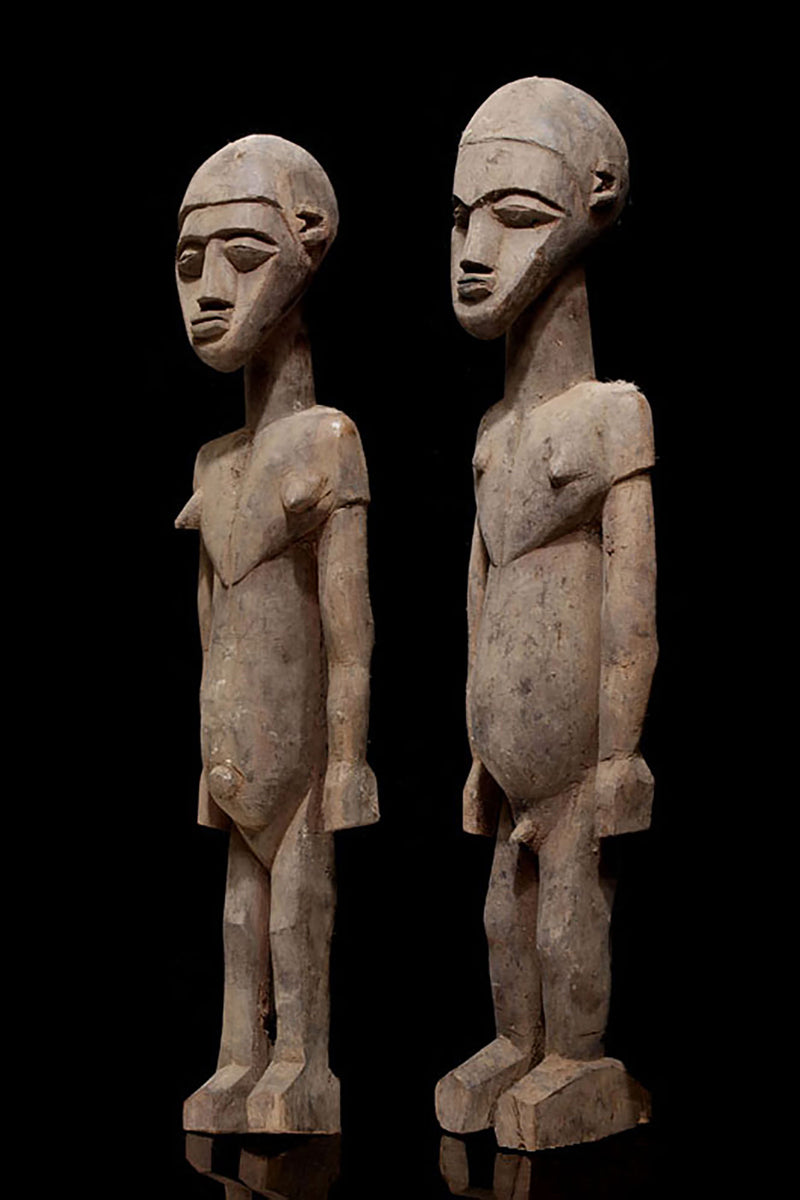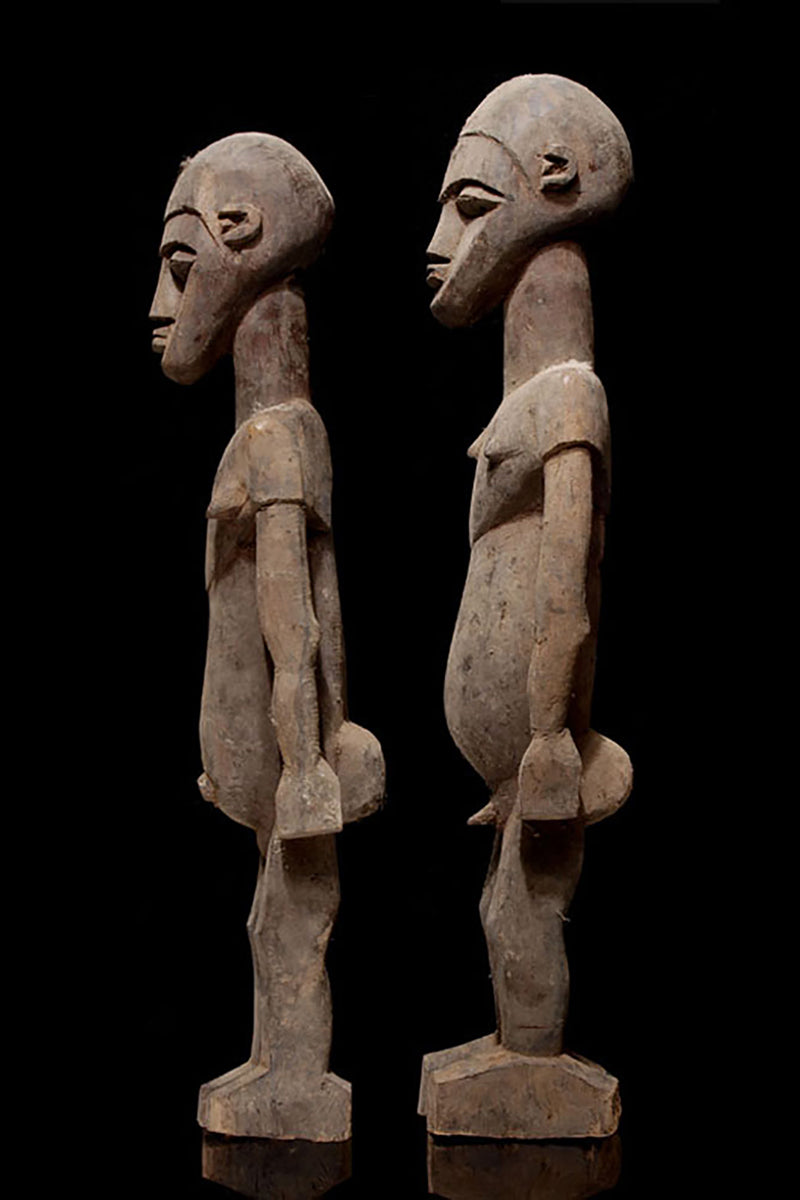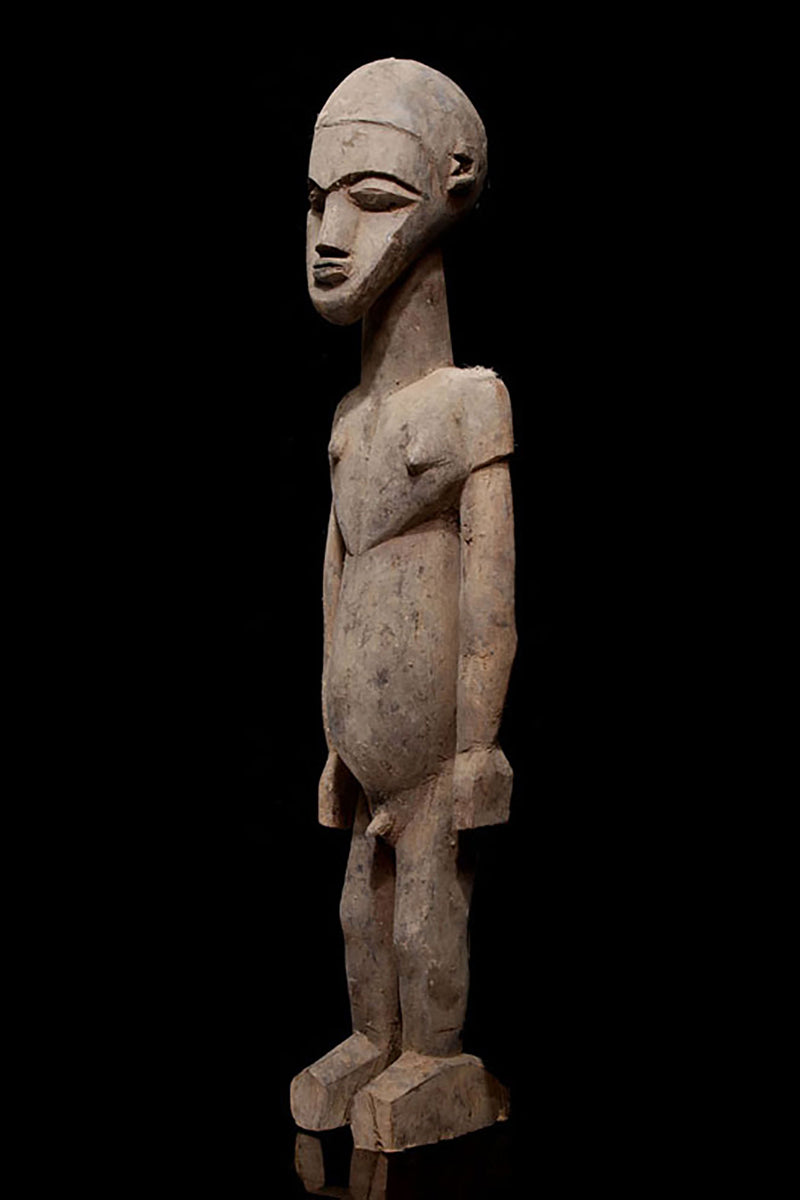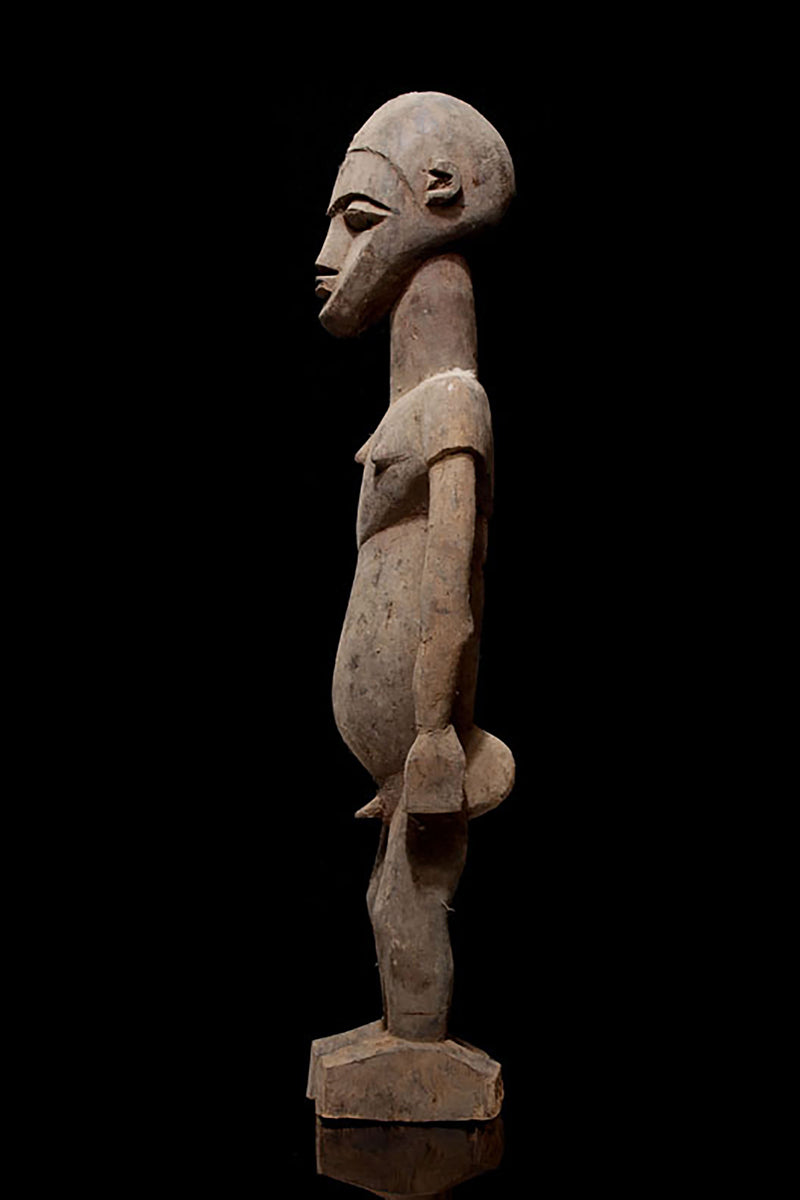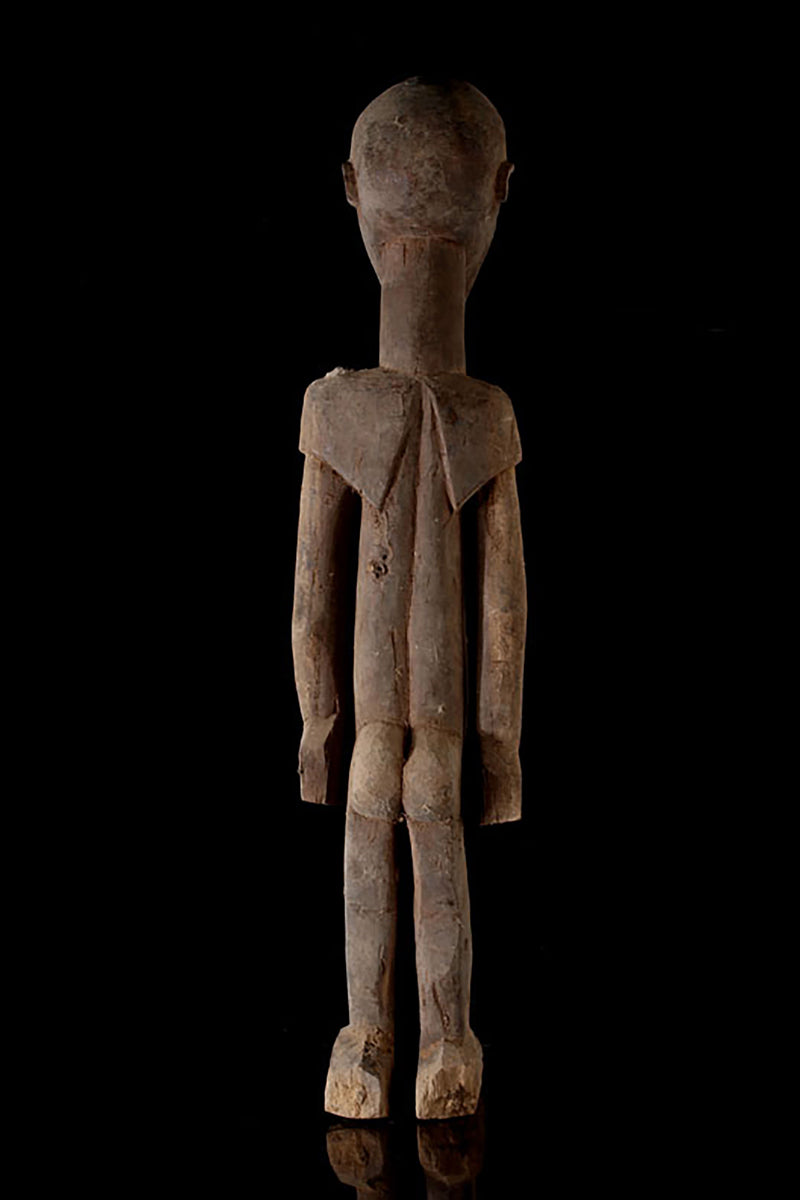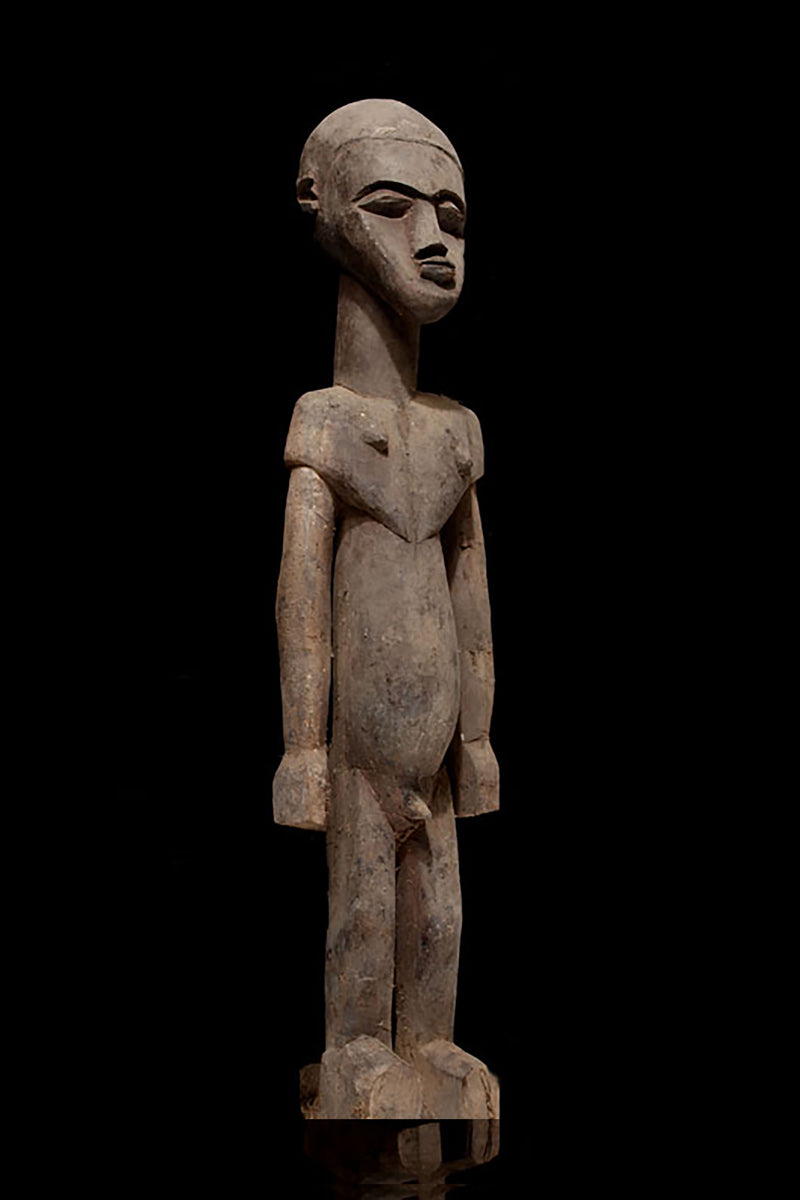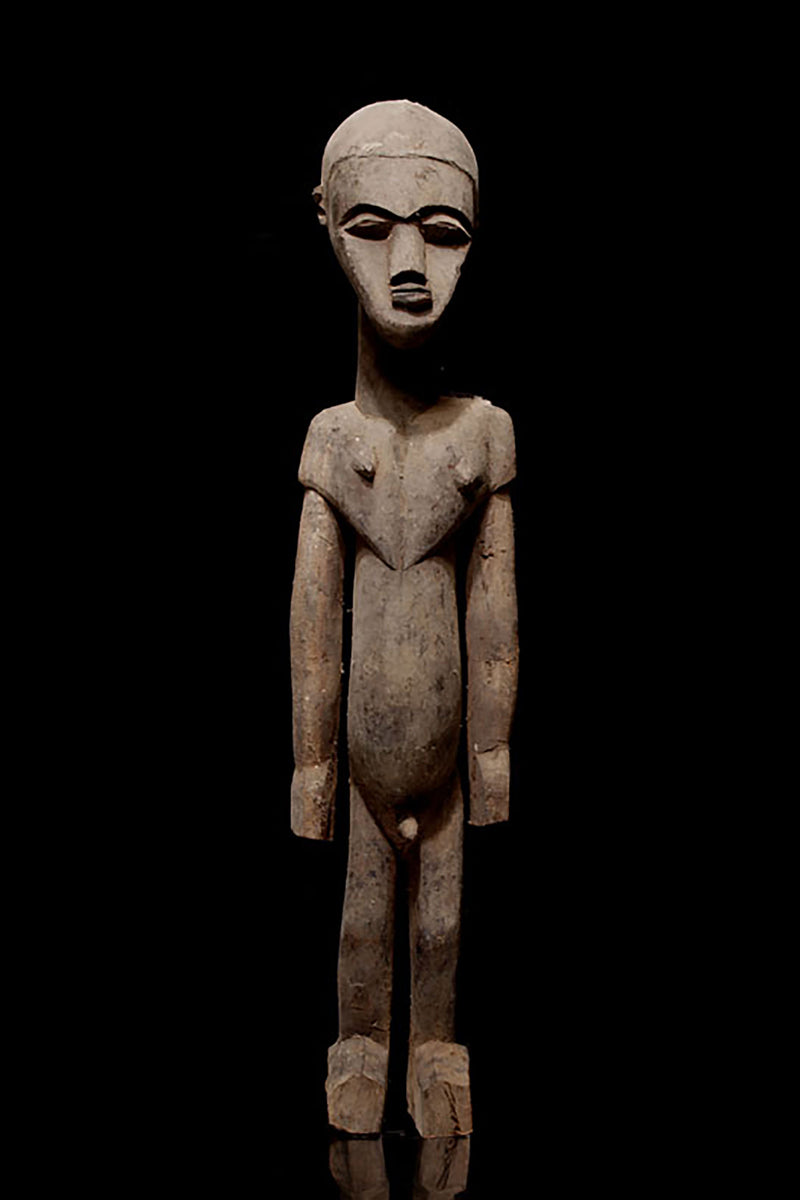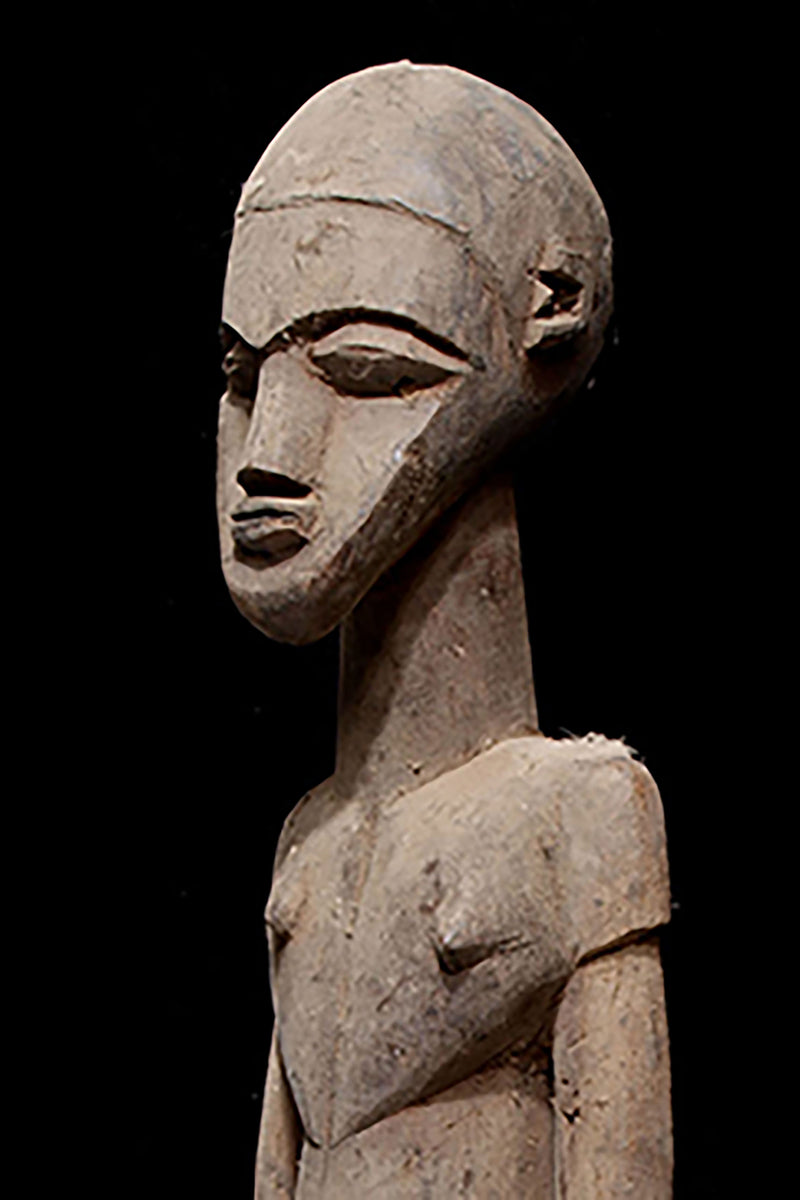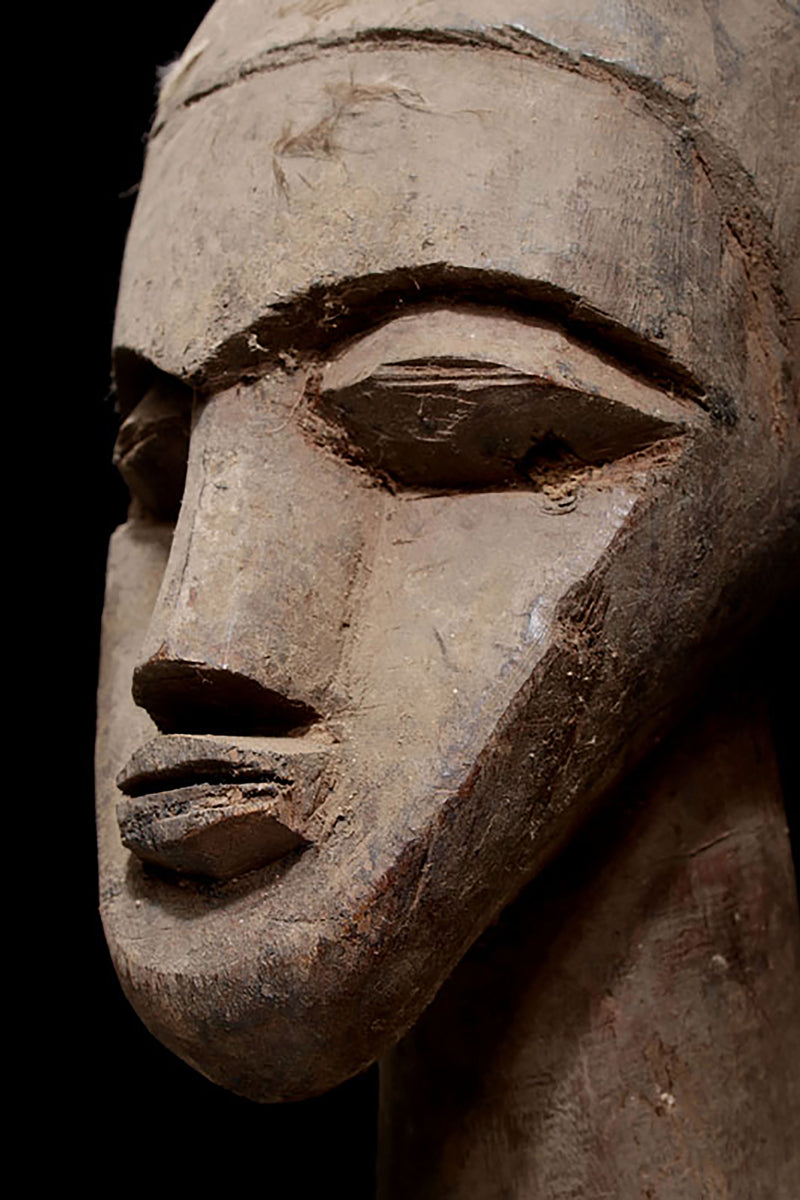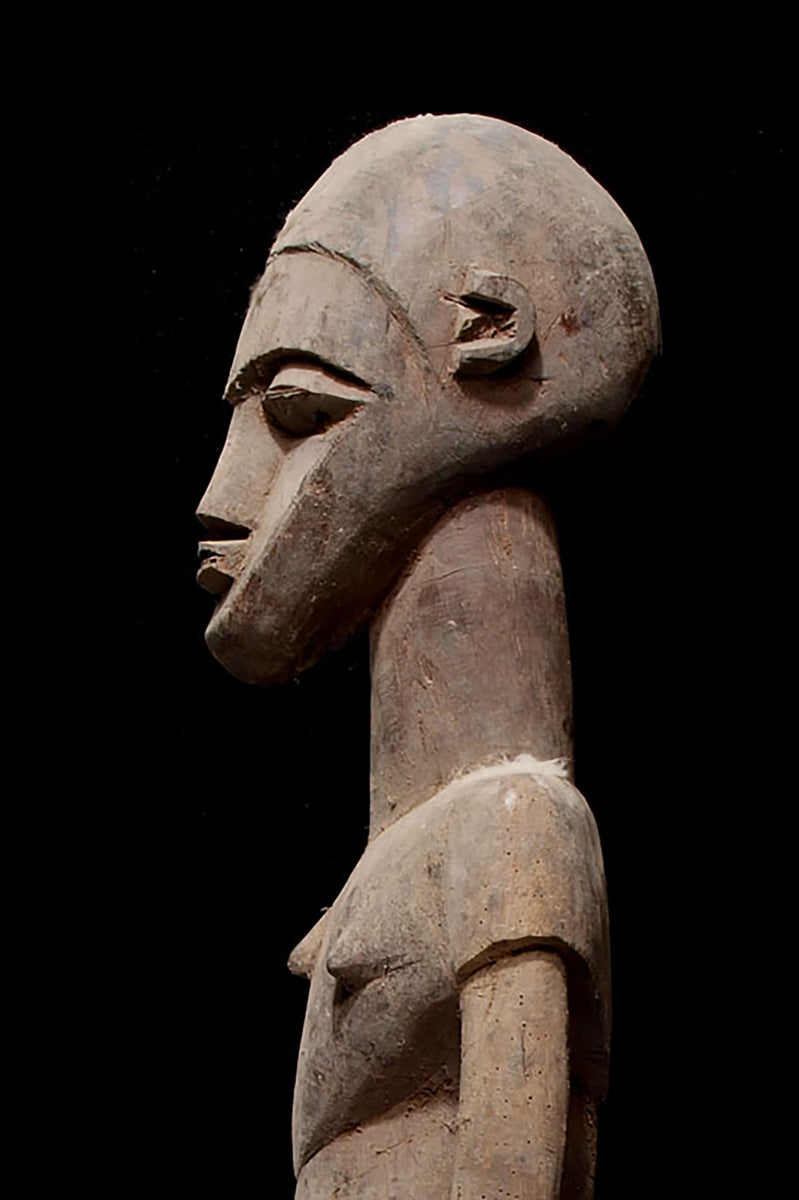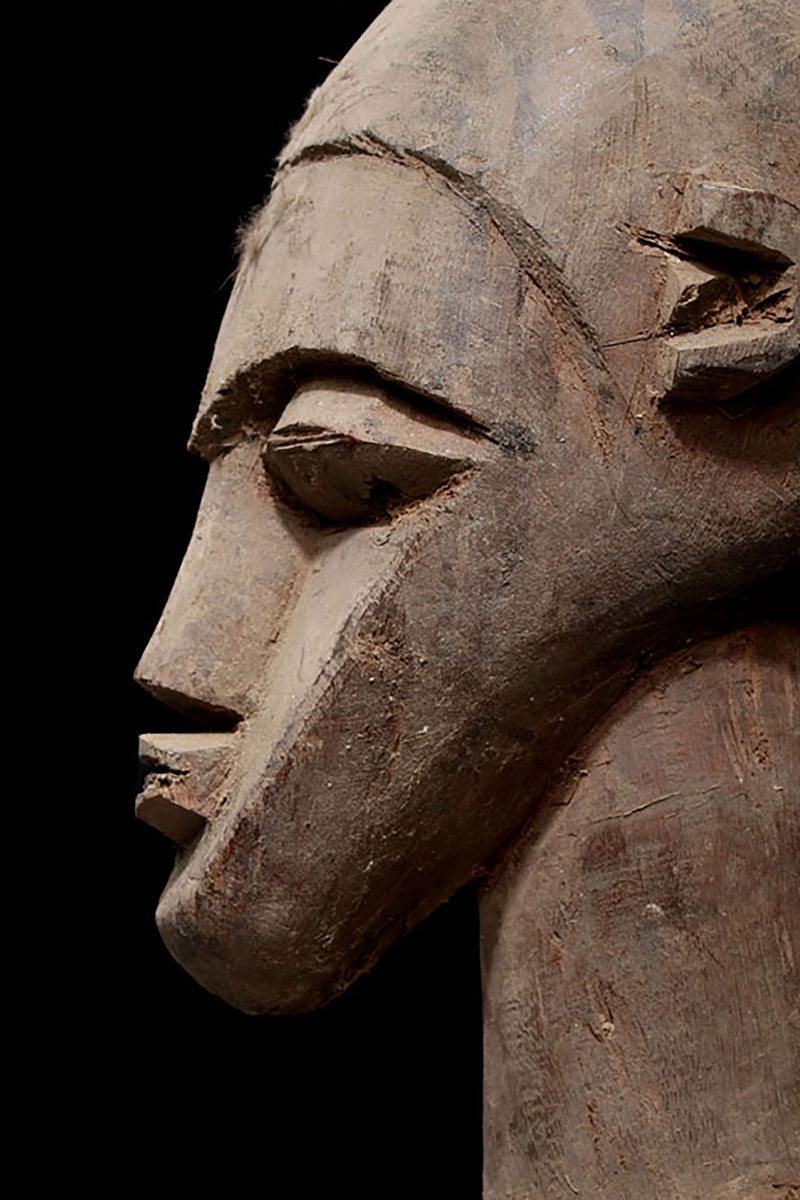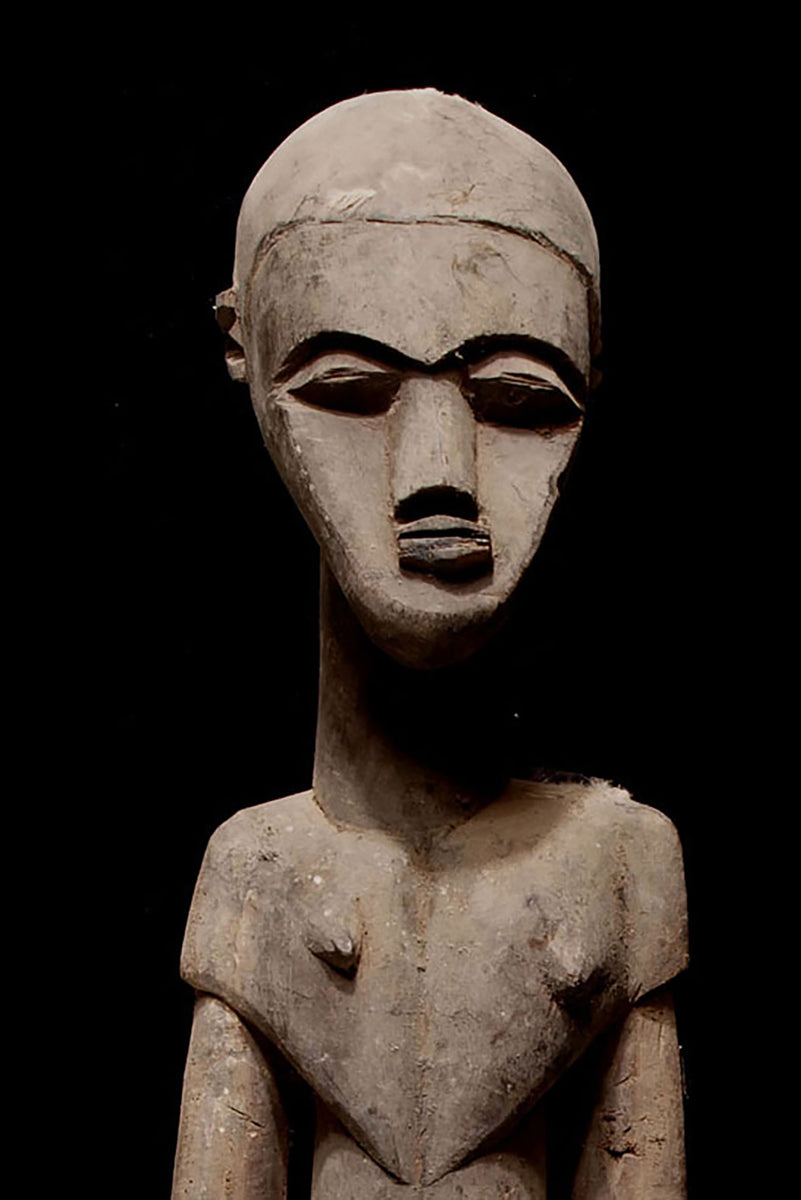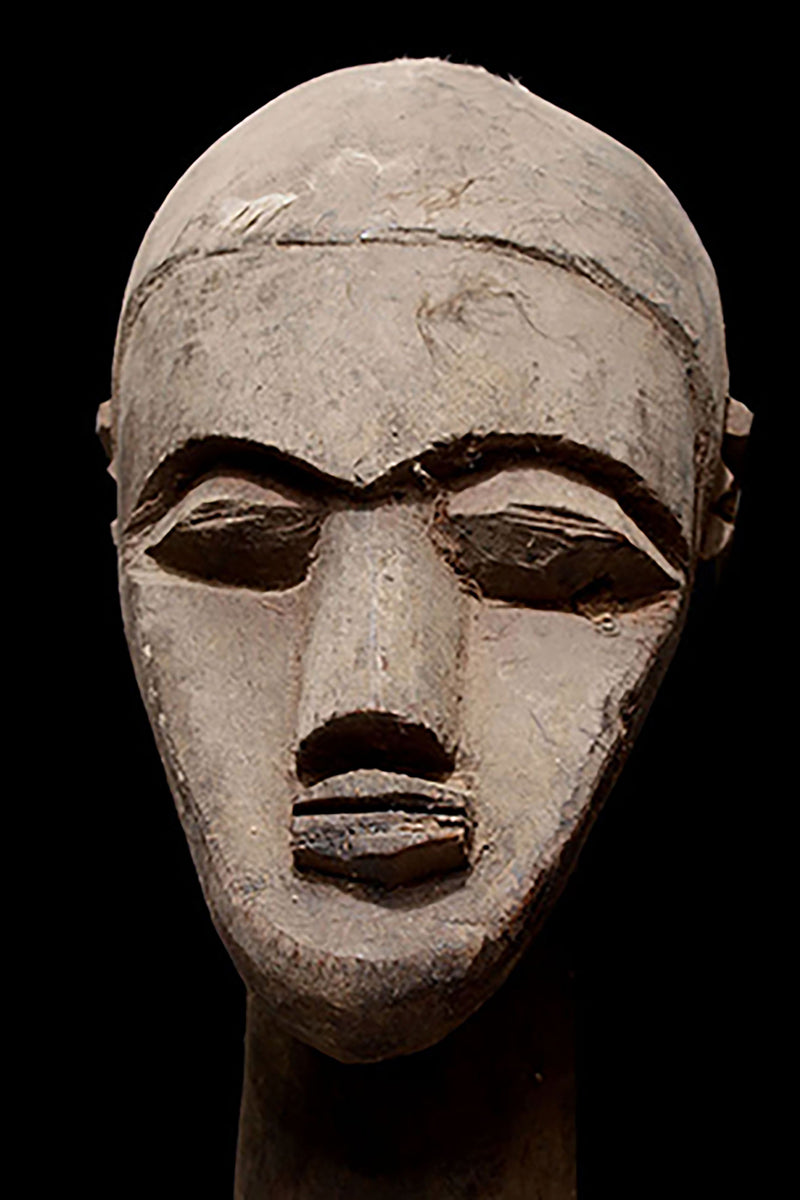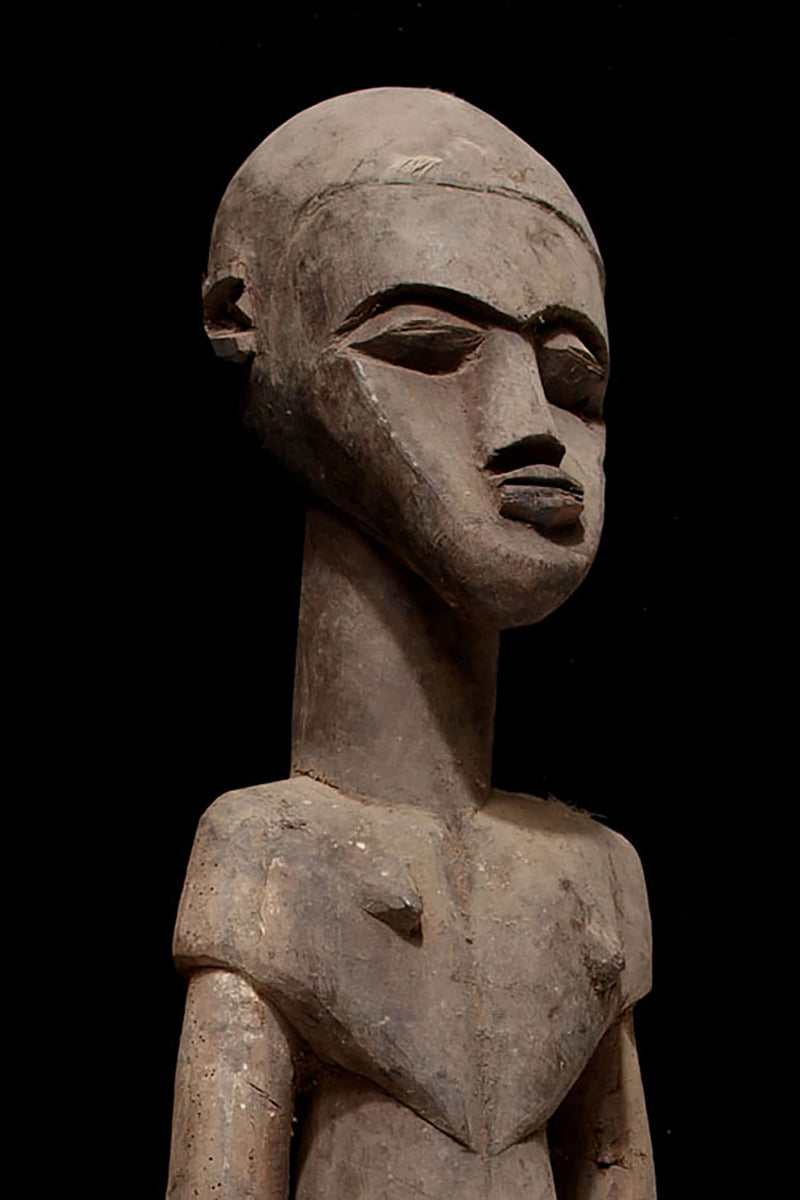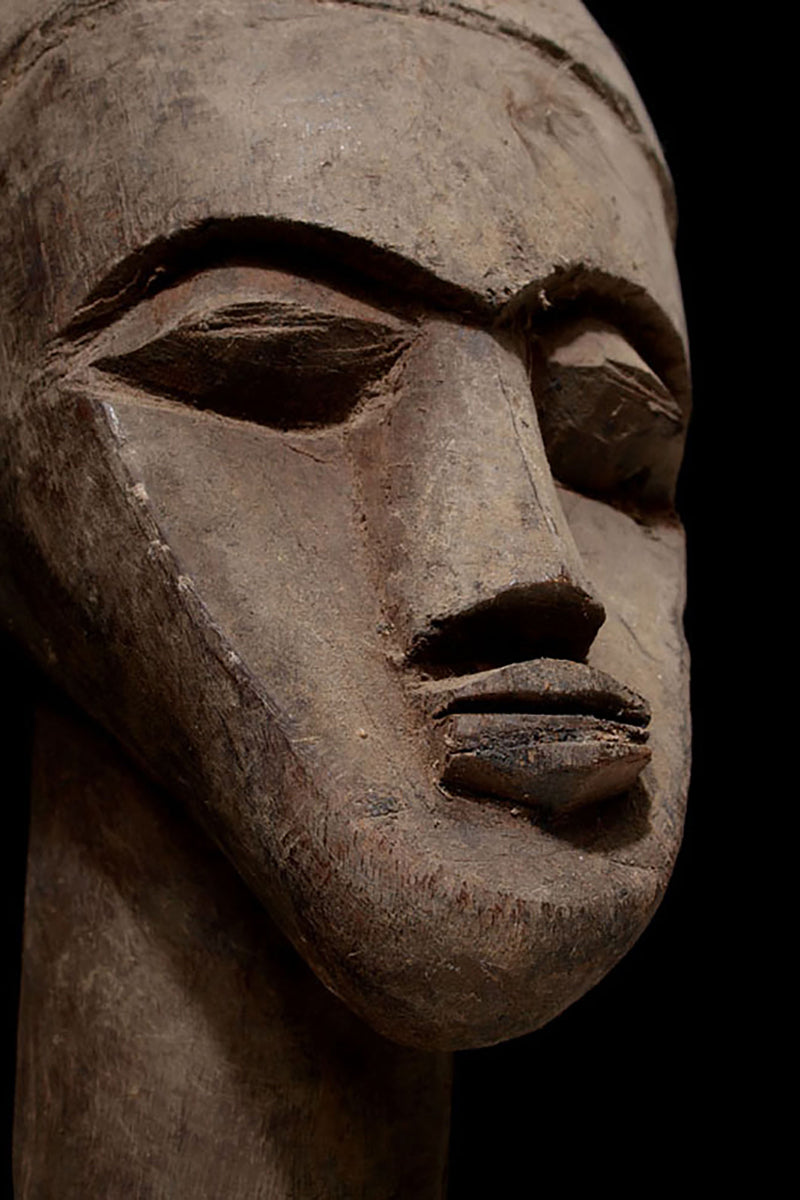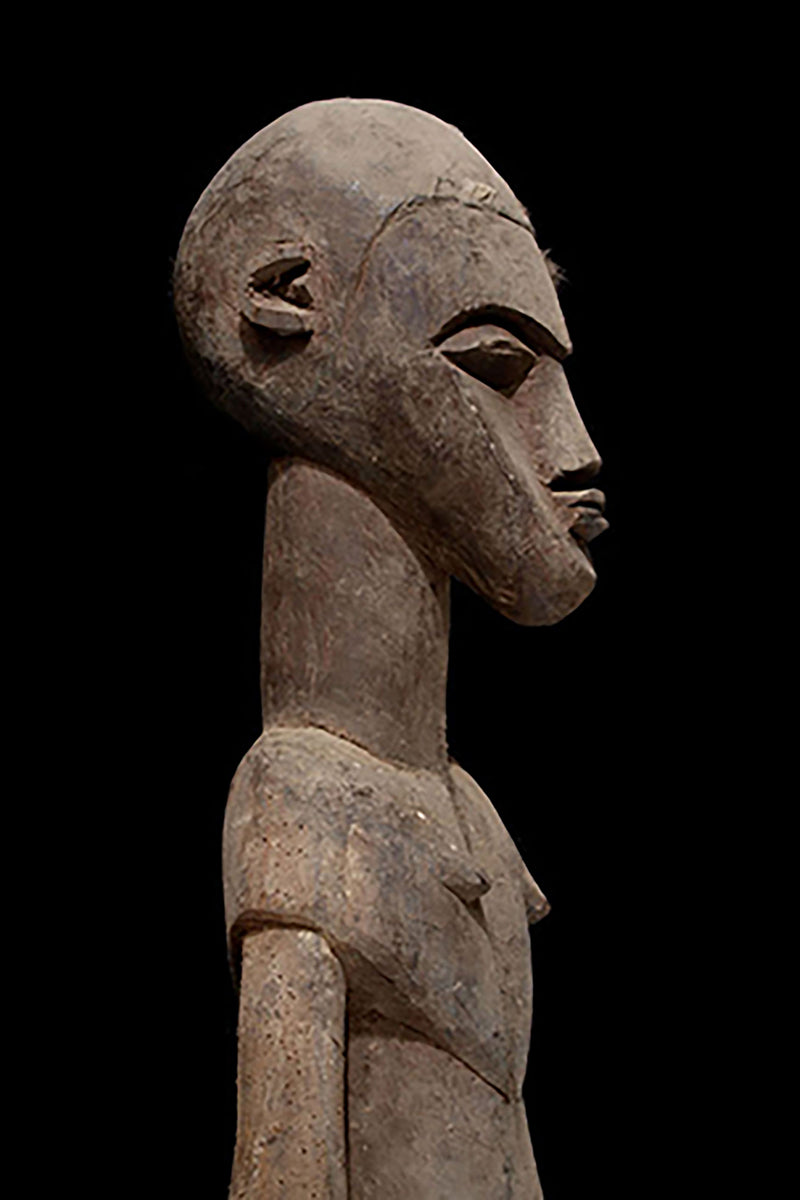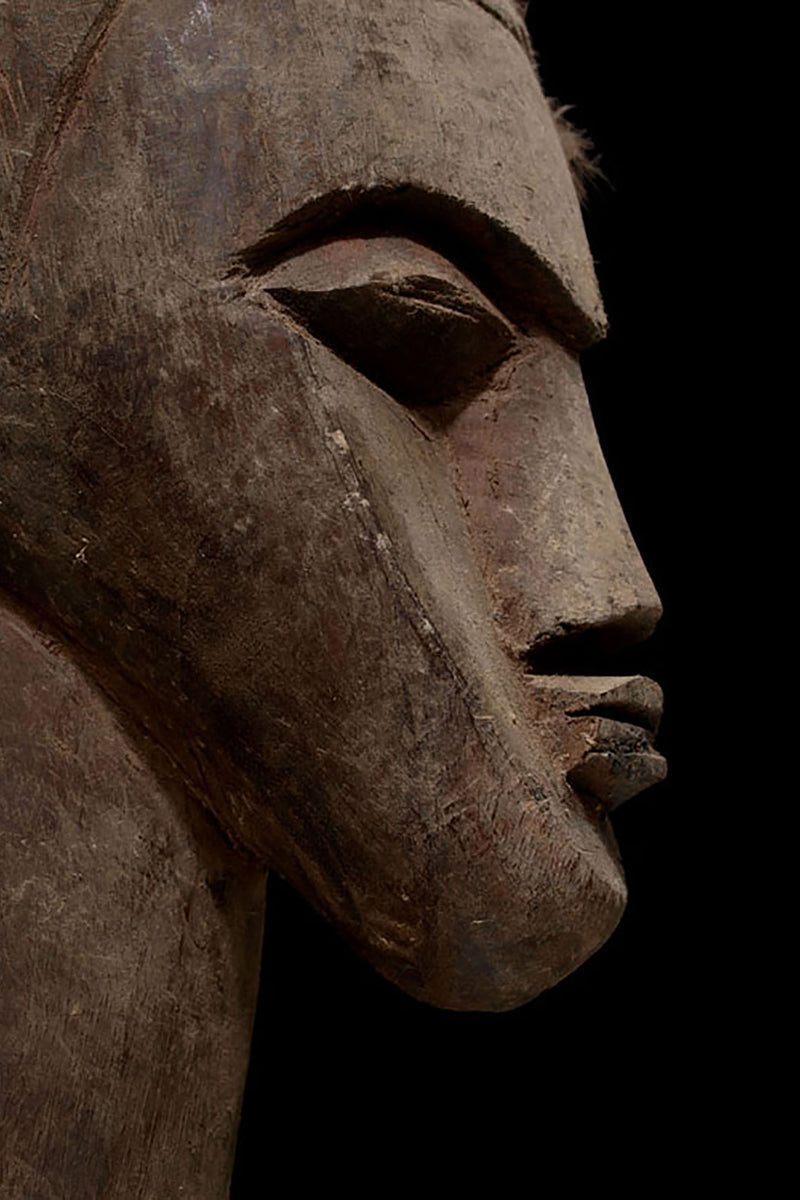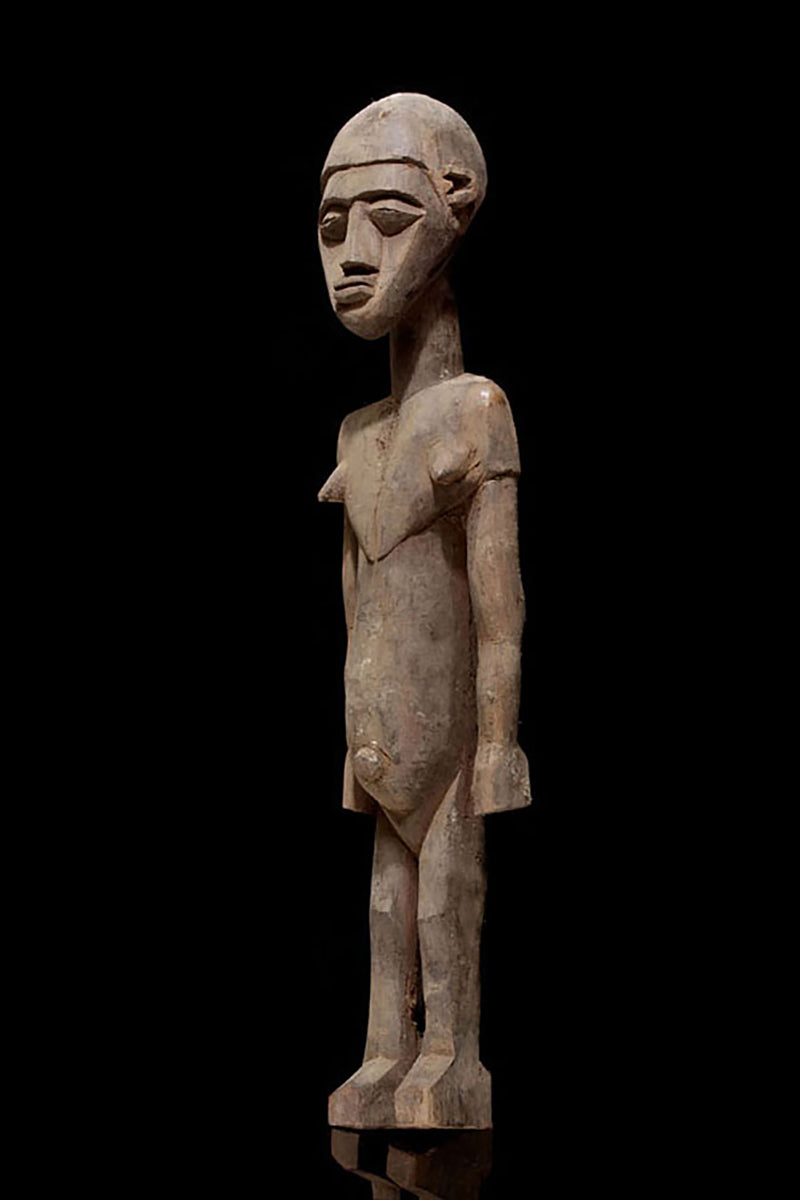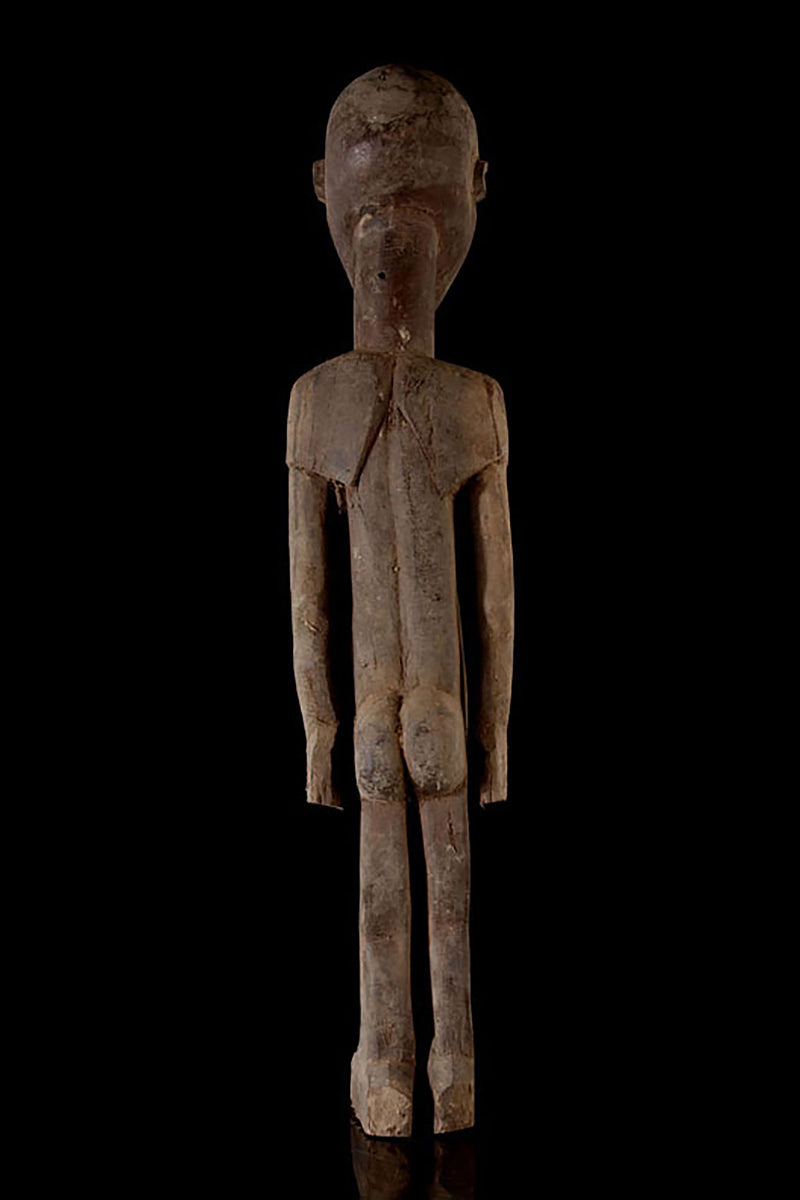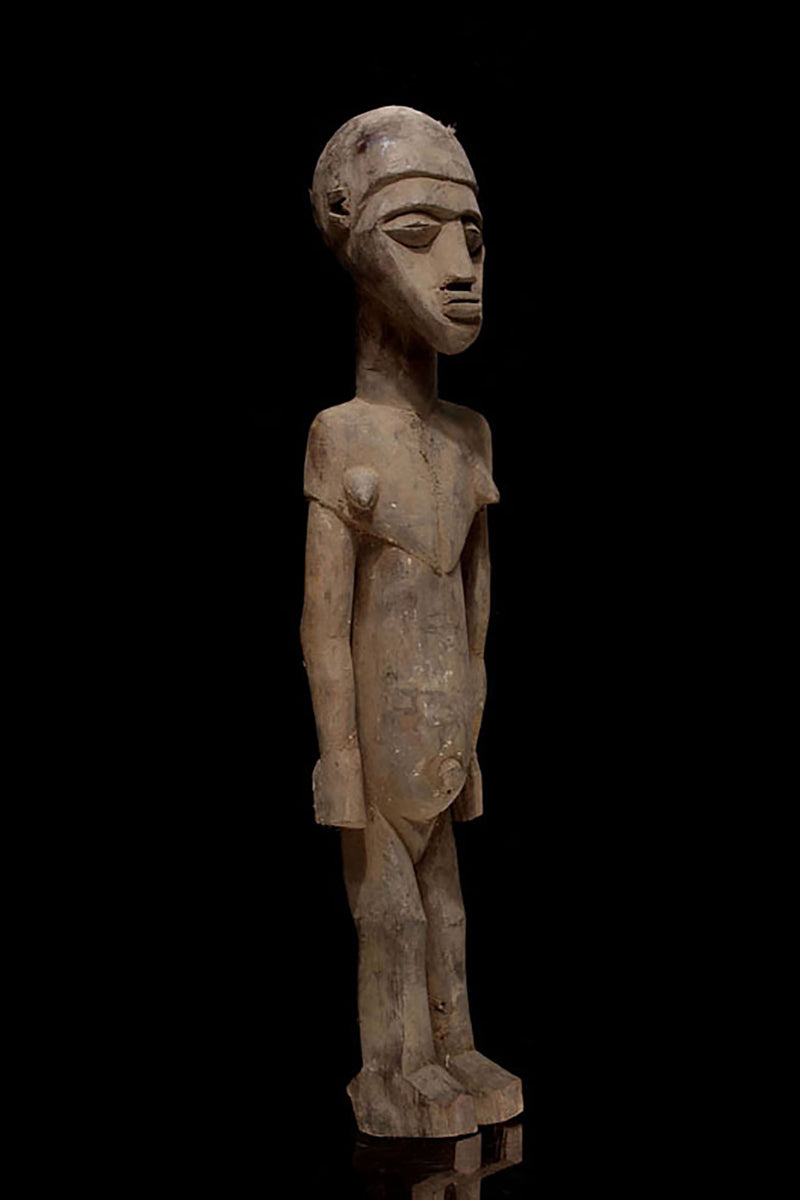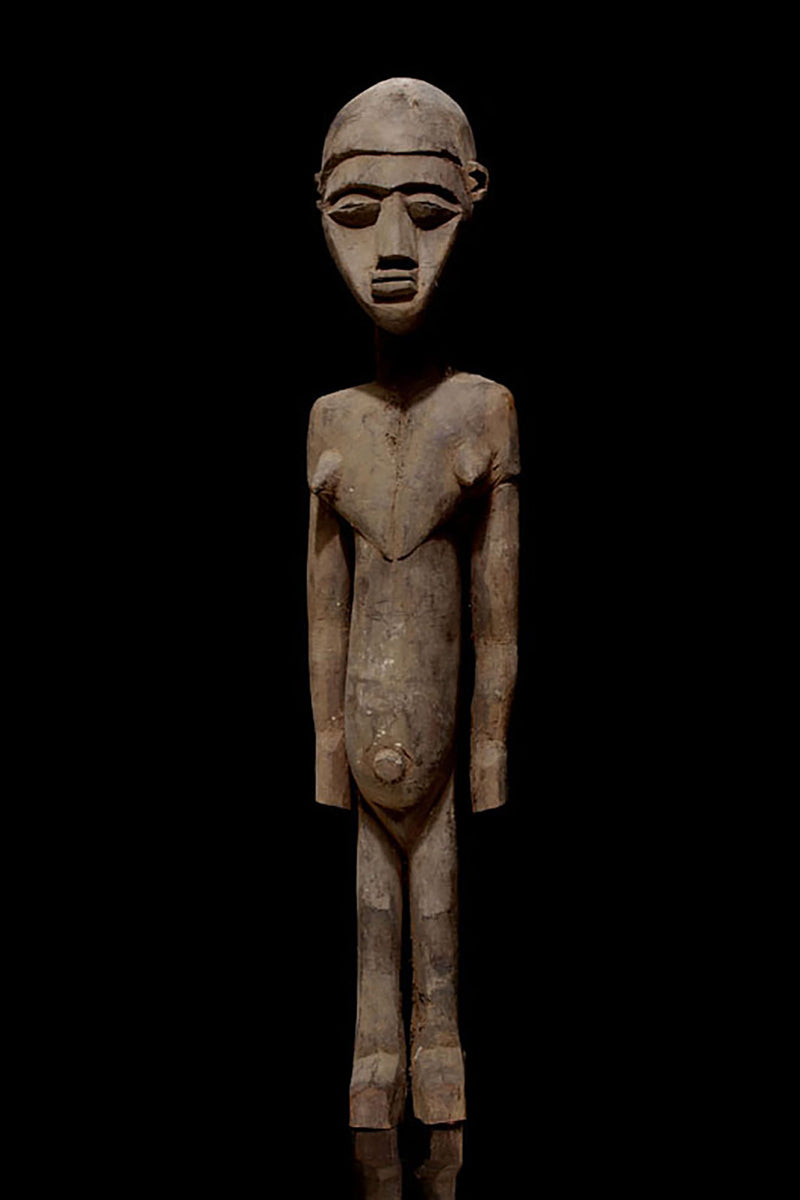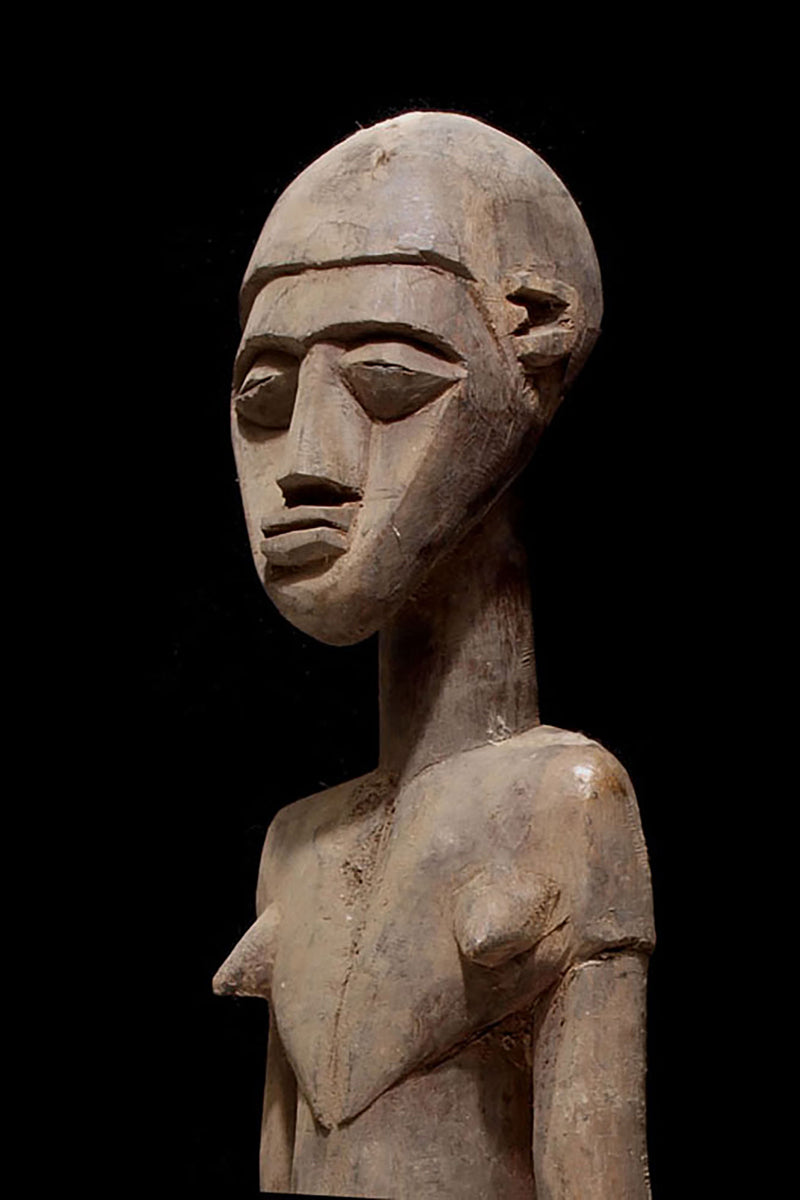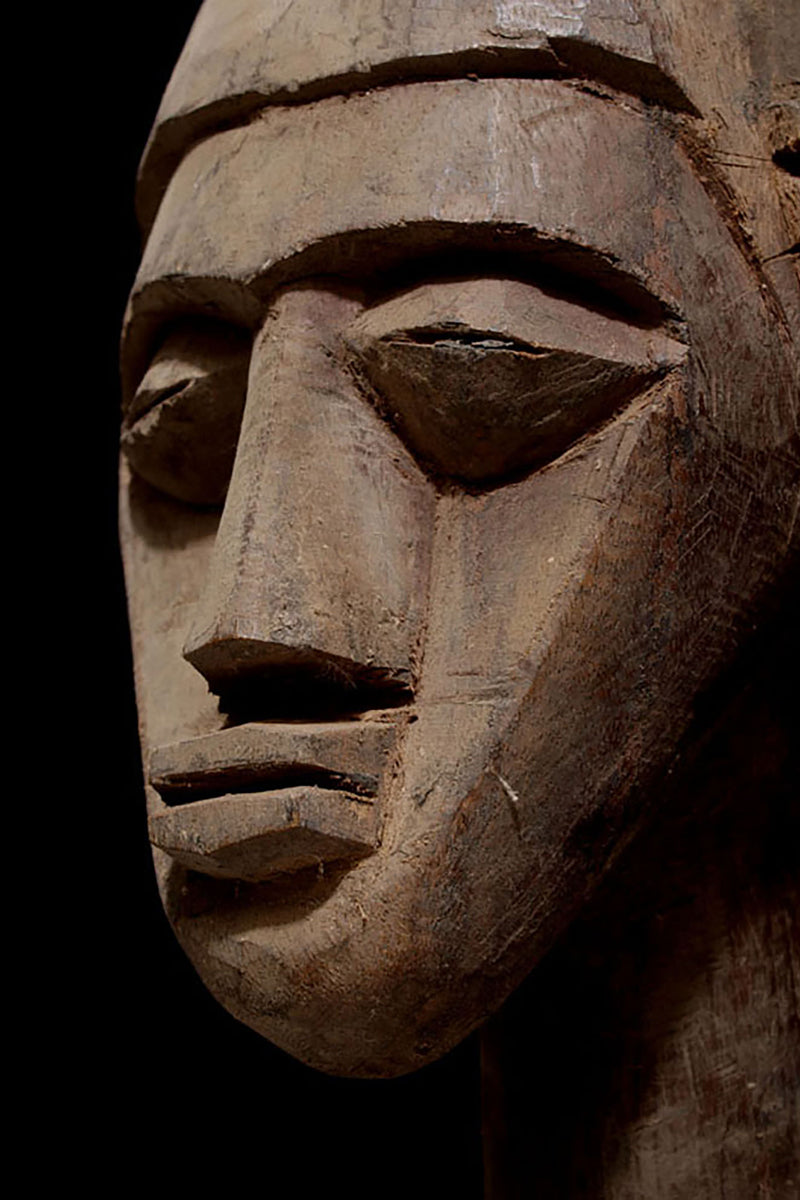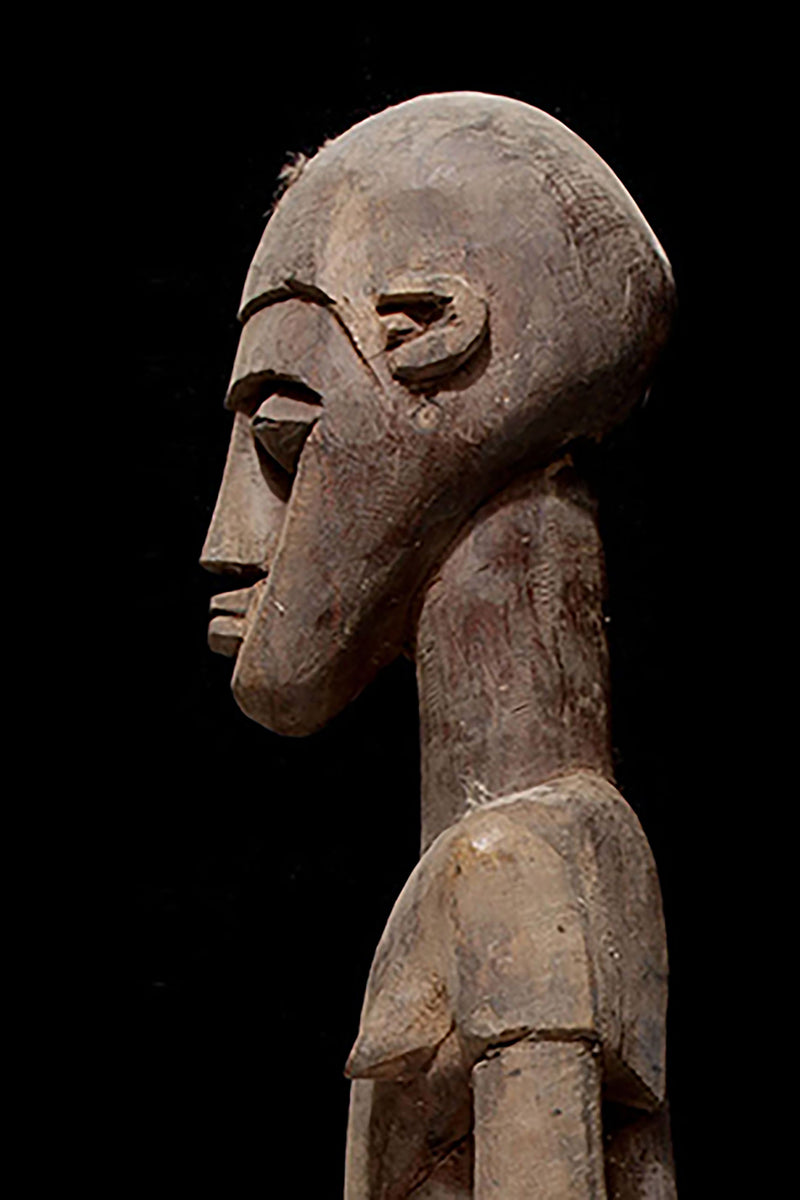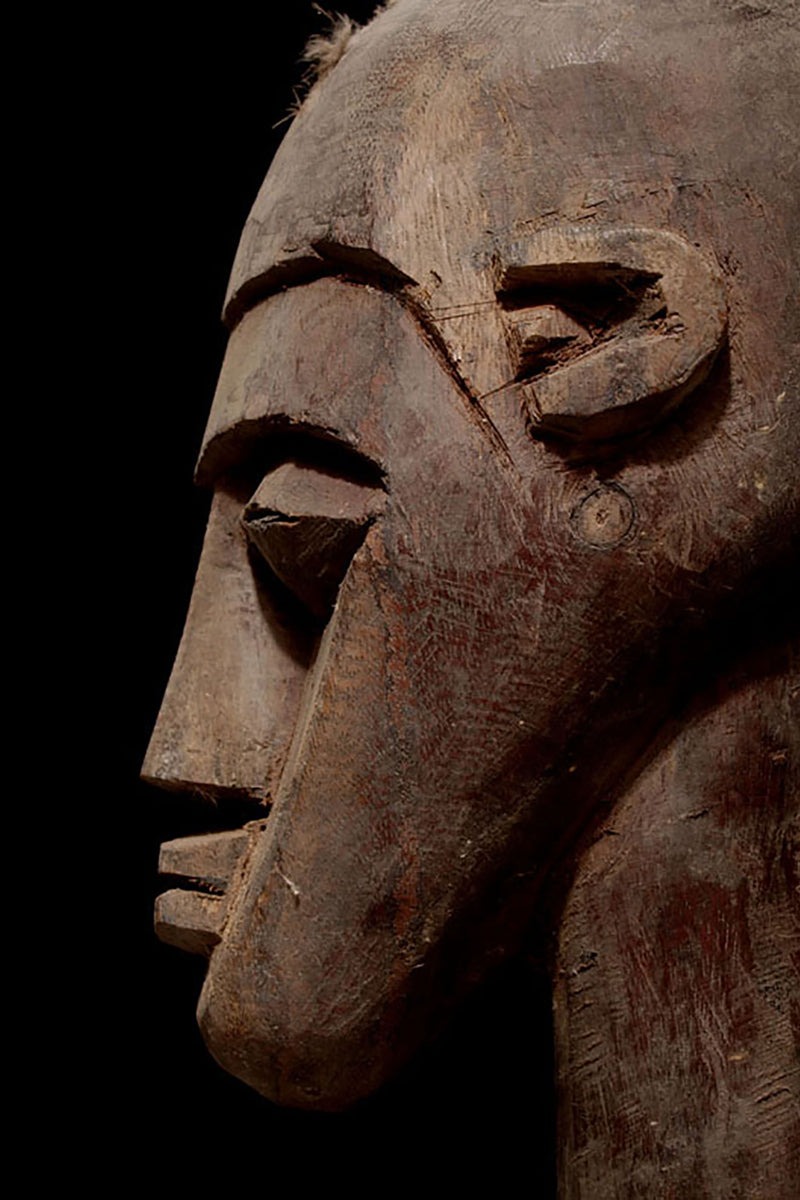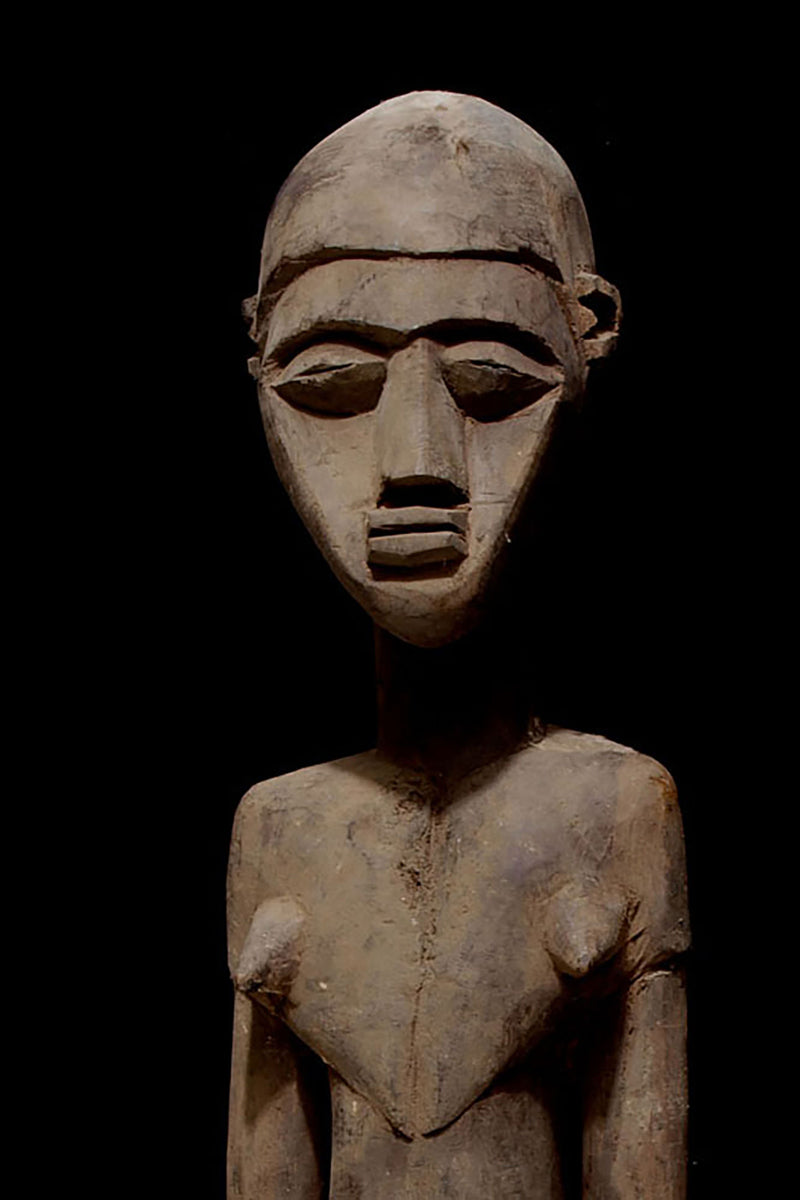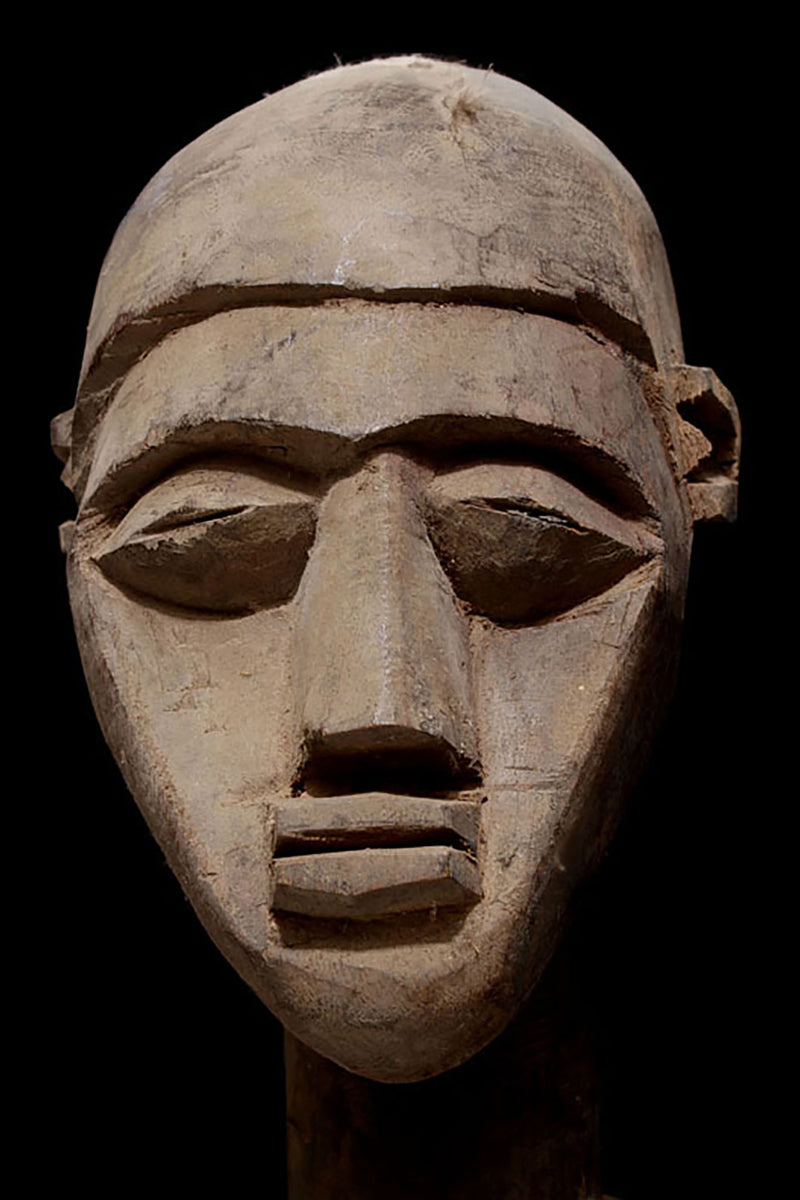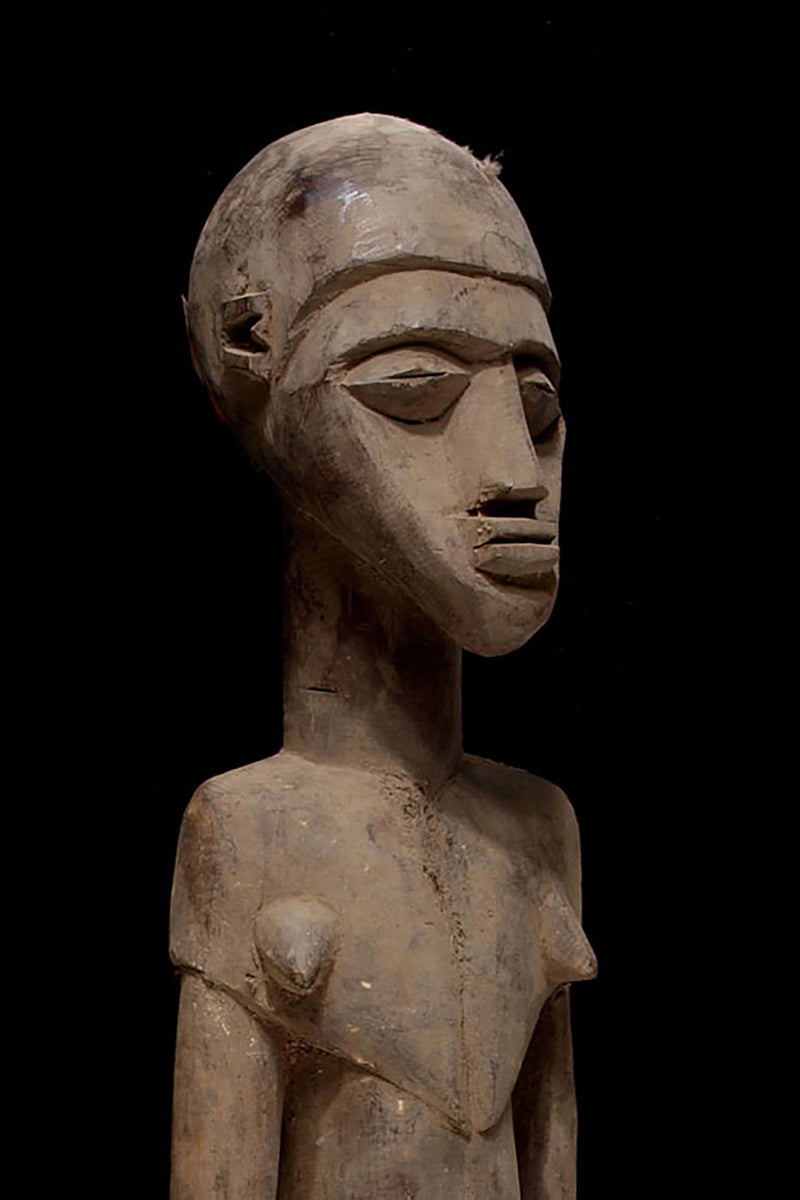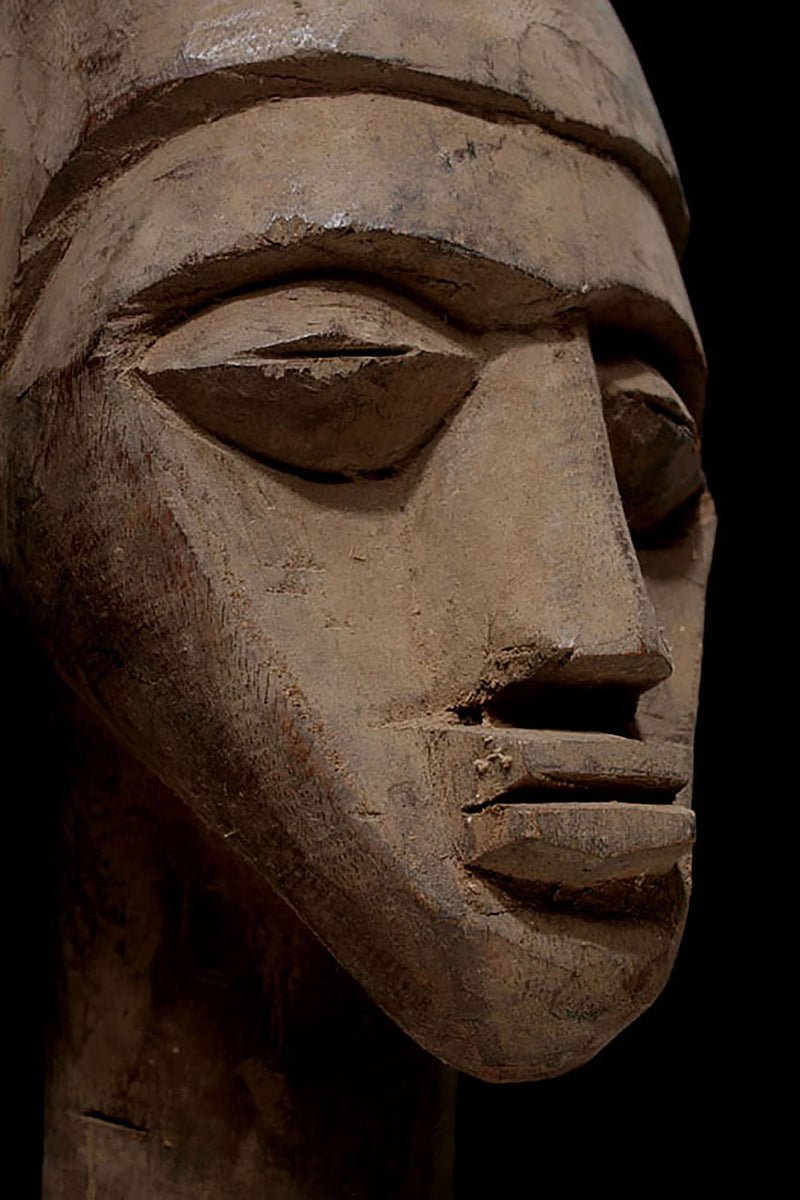Galerie Wolfgang Jaenicke
A Lobi couple
A Lobi couple
Couldn't load pickup availability
A Lobi couple with high probability from Bimtiote Dah or his workshop; heavy, hard wood of the Karité tree.
According of Binaté Kambou, who located the artist´s place of birth in the vicinity of Bouna, Ivory Coast, the carvers name is Bimtiote Dah. He was working near Sansana, 20 km southwords from Gaoua. He died at the beginning of the 1990th, when he was about 70 years old. He has only one son, who is still working as a diviner in the same region. According of Adama Poujougou, Bamako, who saw photos of four objects, this carver is wellknown and once acquired a certain fame for his works, which become rare nowadays, because "the carver died long time ago." Poujougou didn´t know the name of the carver. (More detail informations on request. Even Binaté was the informant of many ethnologists, who did fieldworks in the Lobi-country, secure informations can be only verified by different, independent sources. We will do more researches about the carver and the circumstaces of his life and work on our next tour in February/March. 2008). 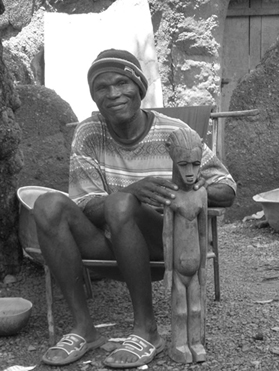
The informant Binate Kambou with a sculpture of Bimtiote Dah.
A Lobi couple from Bimtiote Dah, Burkina Faso, represents a profound embodiment of spiritual, social, and artistic traditions of the Lobi people. The Lobi, an ethnic group spread across Burkina Faso, Ghana, and Côte d’Ivoire, are renowned for their autonomous village structures and complex animist belief systems centered around invisible spirits known as thila. Among their most emblematic cultural artifacts are wooden sculptures called bateba, which serve as mediators between humans and the supernatural realm. A male-female pair, such as one attributed to Bimtiote Dah, carries layered meanings that transcend their physical form.
These paired figures are not merely depictions of conjugal harmony or human relationships. They are ritually activated objects, created under the direction of a diviner and inhabited by a thil spirit. Their function depends on the intentions of their commissioner, which might include protection from misfortune, guidance through crises, fertility support, or even communal welfare. While some bateba represent ancestral spirits or idealized archetypes, others embody specific qualities—such as power, aggression, or receptivity—through gesture and posture. A couple, in particular, symbolizes duality and balance: masculine and feminine, active and passive, spiritual and material. This complementarity echoes broader metaphysical principles within Lobi cosmology, in which harmony arises from the correct alignment of opposites.
The figures typically exhibit an austere aesthetic: static poses, frontal alignment, squared shoulders, cylindrical limbs, and simplified features such as a flat, triangular nose and circular eyes. Their rigidity is not a sign of primitivism but rather a purposeful abstraction. The restraint in form reflects the moral seriousness of the figures’ role; they are not decorative but sacred, demanding reverence and ritual care. Surfaces often show signs of long use—darkened patina, oil traces, and libation residues—all of which indicate the object's spiritual efficacy rather than its age.
The attribution to Bimtiote Dah is particularly significant. In Lobi sculpture, attribution is rare, as most objects are communal and the identities of carvers are not always preserved. When a name like Bimtiote Dah appears, it usually refers to a sculptor of exceptional renown or to a distinct workshop tradition within a specific locality. According to Wolfgang Jaenicke, Bimtiote Dah (circa 1920–1990) was active in the area near Bouna (Ivory Coast) and Gaoua (Burkina Faso), and was part of a workshop lineage with a strong stylistic identity. His works were often characterized by symmetrical pairings and formal restraint, matching the Southern Lobi aesthetic traditions. Jaenicke's documentation—based on interviews with Dah’s son, who continues to serve as a local fetisher—confirms that several of Bimtiote Dah’s sculptures have appeared in prominent European auctions and collections. This lends the figures both historical and cultural legitimacy, grounding them in verified provenance and aesthetic continuity.
Unlike art in the Western tradition, where aesthetic autonomy is often celebrated, Lobi sculpture is inextricably bound to function. A Lobi couple figure is not "art" in the museum sense until it is decontextualized. In situ, it is an active presence—a being rather than a representation. Once removed from its shrine, however, it transitions from sacred tool to cultural artifact. This shift raises important questions about the ethics of collection, display, and interpretation. What is lost when an object that was once fed, spoken to, and feared becomes part of a private collection or museum inventory? What does it mean to isolate the visual from the spiritual, the object from its ontology?
Nonetheless, the international appreciation of Lobi sculpture has brought attention to the philosophical depth of West African spiritual traditions. Collectors and scholars alike have noted the Lobi’s unique resistance to colonial centralization and missionary conversion, factors which may have preserved their material culture in more intact forms than in neighboring regions. The Lobi couple from Bimtiote Dah, then, is not only a beautiful object but also a node in a complex web of ritual practice, metaphysical belief, historical resistance, and contemporary valuation. It stands as a quiet testament to the enduring intelligence and integrity of Lobi culture, offering a glimpse into a worldview where the material and immaterial are deeply and inseparably entangled.
-
Roy, Christopher D. "Art and Life in Africa: The Lobi." University of Iowa Museum of Art. https://africa.uima.uiowa.edu/peoples/show/Lobi
-
Colleyn, Jean-Paul. Aesthetics of African Art: The Lobi of Burkina Faso. Milan: 5 Continents Editions, 2009.
-
Jaenicke, Wolfgang. “A Lobi Couple of Bimtiote Dah.” Wolfgang Jaenicke Galerie. https://wolfgang-jaenicke.com/products/a-lobi-couple-of-bimtiote-dah
-
Jaenicke, Wolfgang. “Traditional Lobi Sculpture and the South Style.” Tribal Art Forum Blog, April 6, 2012. https://wolfgang-jaenicke.blogspot.com/2012_04_06_archive.html
-
Vogel, Susan. African Art as Philosophy: Senghor, Bergson and the Idea of Negritude. De Gruyter, 2013.
-
Gottlieb, Alma. The Afterlife Is Where We Come From: The Culture of Infancy in West Africa. University of Chicago Press, 2004.
Height: 63 cm / 66 cm
Weight: 3,6 kg / 3,8 kg































